What we do
Home / What we do
Thematic Areas
At ASA all our interventions are designed to create an interlinked sustainable ecosystem that uplifts farms and families. To enhance the scale and scope of our initiatives and maximize their effectiveness and outcome we follow a landscape approach that is inclusive of comprehensive thematic areas.

Restoring and Revitalizing Soil Health
ASA is actively intervening to restore and revitalize soil health, recognizing its critical role in sustaining ecosystems and agriculture. Through sustainable farming practices, organic methods, and community education, ASA aims to reduce soil degradation and enhance fertility. Agroforestry initiatives are also promoted to prevent erosion and boost biodiversity. By engaging communities and collaborating with local authorities, we strive to ensure a lasting impact on soil health and the well-being of dependent communities.
Challenges:
- Excessive Use of Chemical Fertilizers
- Poor Land Productivity
- High Soil Erosion
- Undulating Topography
- Deforestation and Land Degradation
- Water Scarcity and Mismanagement
- Unsustainable Agriculture Practices
- Climate Change Impacts
- Lack of Awareness on sustainable practices
Solutions by ASA:
Various strategies, each contributing uniquely to the vitality of the soil, are implemented by ASA across small farmer landscapes to tackle these challenges. The Land and Water Resources Management and Responsible Crop Initiative (Jimmedar Kheti) programmes include targeted interventions that focus on preventing nutrient depletion, enhancing fertility, and preserving the delicate balance of soil ecosystems.

Crop Rotation
Alternating the types of crops planted in a specific area helps prevent the depletion of specific nutrients in the soil, promoting overall soil health.

Cover Cropping
Planting cover crops during off-seasons helps prevent erosion, suppress weeds, and enhance soil fertility by adding organic matter when they are later incorporated into the soil.

Organic Farming
‘Jimmedar Kheti’ by avoiding synthetic pesticides and fertilizers and instead utilizing organic alternatives to maintain a balanced and healthy soil ecosystem.

Composting
Recycling organic waste into compost provides a rich source of nutrients, improving soil structure and water retention.

Access to Quality Seeds
ASA provides seed varieties that are designed to enhance soil health through practices like nitrogen fixation or improved nutrient uptake. This supports sustainable agriculture by reducing the need for synthetic fertilizers and promoting natural soil fertility.

Agroforestry
Integrating trees and shrubs into farming systems provides additional organic matter, improves soil structure, and prevents soil erosion.
Water Security
Addressing water scarcity by implementing projects for efficient water harvesting, storage, and distribution across small farmer communities is a vital thematic area for ASA. The key strategy is to develop detailed village watershed plans, mapping resources and sustainable conservation measures. These plans will be consolidated at the landscape level using GIS tools for accurate, data-driven scientific management, focusing on improving key natural resource parameters. Collaborating with local authorities, ASA aims to create a lasting impact, improving water security, enabling sustainable agriculture and enhancing incomes in these communities.

Challenges:
- Monsoon-Dependent Agriculture
- Lack of Irrigation Infrastructure
- Depleting Groundwater Levels
- Poor Water Management
- Adverse Effects of Climate Change
- Land Fragmentation into Smaller Holdings
- Reliance on Water-intensive Crops
- Limited Awareness of Sustainable Water Practices
- Inconsistent Govt. Water Policies
Solutions by ASA:

Training on Water Conservation
Conducting training programmes on water conservation techniques, including sustainable farming with practical skills to optimize water use on their lands.

Providing Financial Support
Offering financial assistance and access to credit and Govt. funds to encourage and enable investment in water-efficient technologies and infrastructure, fostering long-term water security.

Sustainable Farming Practices
Conducting awareness programmes to educate farmers about sustainable farming practices, including crop rotation, organic farming, and agroforestry, helps optimize water usage and improve soil health.

Community-Based Water Management
Facilitating the formation of community water management committees that empower small farmer communities to collectively manage and distribute water resources, ensuring equitable access and sustainable use.

Implementing Rainwater Harvesting
Installing rainwater harvesting systems to capture and store rainwater during the monsoon season, providing an additional source of water for agricultural and domestic use during drier periods.

Promoting Efficient Irrigation
Encouraging the adoption of water-efficient irrigation methods such as lift irrigation, drip irrigation and sprinkler systems to significantly reduce water wastage and enhance agricultural productivity.
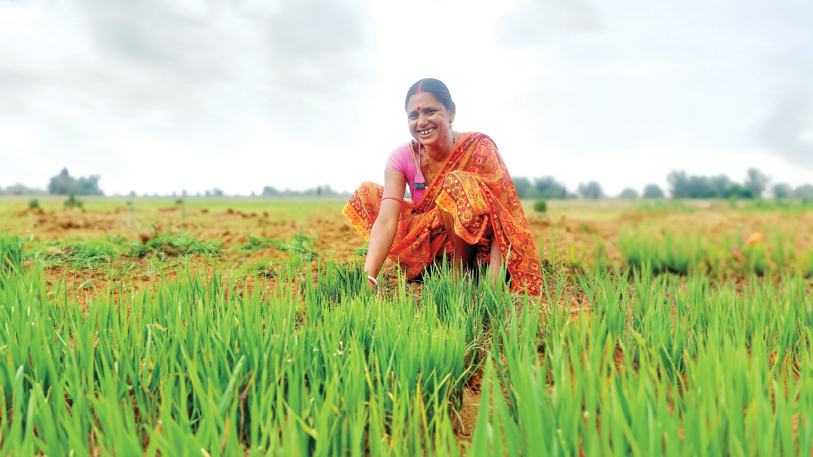
Biodiversity & Sustainable Farming
ASA aims to enhance agricultural productivity through technology and help increase the current income of Rs.40,000/hectare, to more than Rs.One lakh/hectare annually.The knowledge deficit in good agricultural practices, stemming from an inefficient public extension system in marginalized areas, contributes to this disparity. To bridge this gap and unlock agricultural potential, ASA focuses on promoting sustainable practices like Organic farming, Integrated Pest Management (IPM), Good Agricultural Practices (GAP), and natural farming, complemented by initiatives such as tree planting, social protection, and restoring natural forests on public lands, along with community pasture development.
Challenges:
- Monoculture Farming
- Deforestation
- Widespread Use of Agrochemicals
- Consumption of Natural Resources due to High Population
- Land Fragmentation
- Introduction to Non-Native Invasive Species of Flora and Fauna
- Lack of Awareness
- Climate Change
- Zero Conservation Efforts
Solutions by ASA:

Community Engagement
Educating and involving local communities in biodiversity conservation fosters a sense of responsibility and encourages sustainable farming.

Value Chain Development
Strengthening value chains through FPOs is crucial for various products in the landscape, connecting producers with markets through forward and backward linkages in agriculture and allied sectors.

Agroforestry and ‘Trees on Farm’
Planting trees and shrubs in the backyard, farm bunds, and wasteland to improve soil health, provide pastures/fodder for cattle and diversify crop production.

‘Poshan Vatika’ - ASA’s Vegetable Farming Initiative
Growing a mix of different vegetable crops and kitchen gardens in the same area creates a diverse and resilient ecosystem that helps meet nutritional needs, and increases income thereby fostering self-sustenance.

Promotion of Organic Farming
As part of its focus on the Responsible Crop Initiative, ASA promotes ‘Jimmedar Kheti’ – through organic farming training, handholding and market linkage in various locations. Switching to organic pesticides and fertilizers to promote healthier soil, reduce chemical runoff, and support biodiversity.

Promotion of Good Agricultural Practices
Adopting effective agronomic practices such as optimal seed sources, treatment, and adherence to recommended rates, along with responsible cropping initiatives that encourage social and environmental responsibility. Implementing a three-tier assessment mechanism to monitor progress and track results.
Livelihoods
There was a pressing need for a holistic framework that not only improves the immediate economic prospects of smallholder farmers but also ensures long-term resilience, self-sufficiency, and prosperity within the agricultural landscape. Through strategic interventions in agriculture and allied activities, ASA is making substantial strides in improving the livelihoods of smallholder farmers. Interventions extend beyond the fields, encompassing allied activities and agro-processing, creating diversified income streams for farmers.
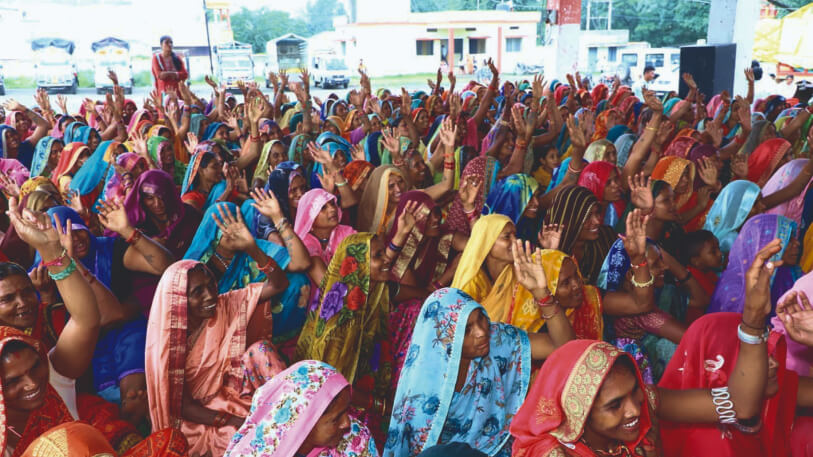
Challenges:
- Dependency on rain-fed agriculture
- Erratic daily wage labour opportunities
- Exploitative practices of money lending, debt and lack of financial support
- Unfair pricing due to middlemen
- Limited market access for selling produce
- Market price volatility
- Climate change impact
- Limited access to resources hindering sustainable livelihood
- Lack of exposure to modern technology
Solutions by ASA:

Provision of market access
to facilitate credit availability, forge value chain linkages, and provide insurance solutions.

Promotion of sustainable agricultural practices
to enhance productivity and also foster the intensification and diversification of agricultural activities.

Natural resources development and management
to create a sustainable foundation by preserving and augmenting the vital resources on which farming communities depend.

Participation and Gender Equity
Community institutions' development and gender equity are vital to sustaining livelihood programmes and interventions. ASA actively promotes gender equity through targeted initiatives that provide women with training in modern farming techniques, access to credit, and knowledge about sustainable practices. Additionally, awareness programmes and skill-building workshops ensure that women are equipped with the tools necessary to empower women to take on leadership roles and participate in decision-making processes. This comprehensive approach not only enhances the economic standing of women but also contributes to the overall resilience and prosperity of smallholder farming households and communities.
Challenges:
- Poor Quality of Living
- Higher IMR, MMR rates
- Regressive mindset and gender bias
- Limited role of women in agriculture and community development
- Lack of women in leadership roles/decision-making process
- Restriction on women owning land and property
- Additional domestic responsibilities
- Lack of education and technical training for women
- Limited understanding of financial practices
Solutions by ASA:

Community Engagement
Educating and involving local communities in biodiversity conservation fosters a sense of responsibility and encourages sustainable farming.

Value Chain Development
Strengthening value chains through FPOs is crucial for various products in the landscape, connecting producers with markets through forward and backward linkages in agriculture and allied sectors.

Agroforestry and ‘Trees on Farm’
Planting trees and shrubs in the backyard, farm bunds, and wasteland to improve soil health, provide pastures/fodder for cattle and diversify crop production.

‘Poshan Vatika’ - ASA’s Vegetable Farming Initiative
Growing a mix of different vegetable crops and kitchen gardens in the same area creates a diverse and resilient ecosystem that helps meet nutritional needs, and increases income thereby fostering self-sustenance.

Promotion of Organic Farming
As part of its focus on the Responsible Crop Initiative, ASA promotes ‘Jimmedar Kheti’ – through organic farming training, handholding and market linkage in various locations. Switching to organic pesticides and fertilizers to promote healthier soil, reduce chemical runoff, and support biodiversity.

Promotion of Good Agricultural Practices
Adopting effective agronomic practices such as optimal seed sources, treatment, and adherence to recommended rates, along with responsible cropping initiatives that encourage social and environmental responsibility. Implementing a three-tier assessment mechanism to monitor progress and track results.
Alignment TO SDGs
At ASA we believe SDGs are vital cogs in the wheel of innovation and national growth and take immense pride in linking them to our core purpose. All our strategies and interventions are now aligned to contribute to critical SDGs which were identified through the following 3-step process:
Understanding the SDGs
Identifying Our Contribution to SDGs
Prioritizing relevant SDGs through our goals
Thematic Impact Highlights
Restoring and Revitalizing Soil Health

- 34 Lakh Ha - Area under Organic cultivation
- 1.5 Lakh Ha - Area under ‘Jimmedar Kheti’
- Increased organic content in soil
- Soil erosion checked
- Increased moisture conservation leading to natural vegetation
- Increased biodiversity
Water Security
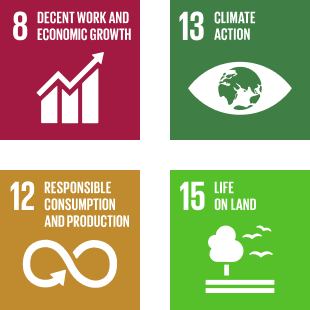
- 52,600 Cr Litres- Rainwater harvested for irrigation
- 250% - Cropping intensity achieved
- 1.31 Lakh - Farmers benefitted
Biodiversity and Sustainable Farming
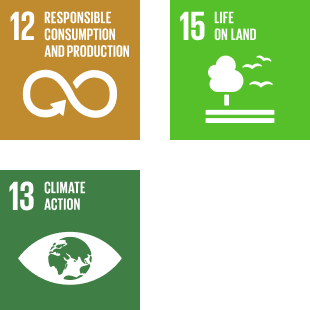
- 3.5 Lakh farmers practicing Jimmedar Kheti
- .56 Lakh farmers engaging in Organic Farming
- Reduction in synthetic fertilizers and chemicals, leading to reduced GHG emission
- Improved water quality
- Increased biodiversity
- Increase in the number of trees
Livelihoods
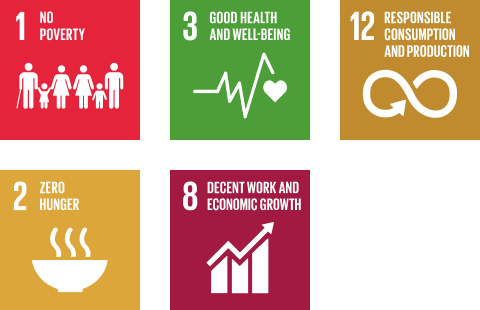
- 1.67 Cr Man-days generated due to increase in irrigated area (Man-days @240 /Ha)
- 387 Cr of additional farm income @ Rs. 55,500/Ha in irrigated area
- 75 Cr - Gross increased income through Micro Enterprise Loan
- 100% for Organic & 50% in Jimmedar Kheti - Reduction in cost of chemical inputs
Participation and Gender Equity
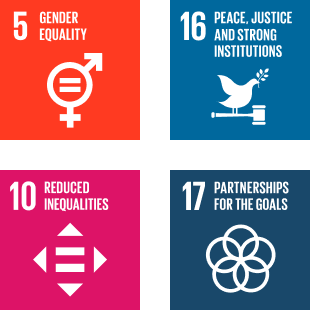
- More than 70% members of our Community-Based Organizations are women
- More than 86 FPOs formed till date
- 2,800+ Farm Productions CBOs formed till date
- 1,155+ Water User CBOs formed till date


